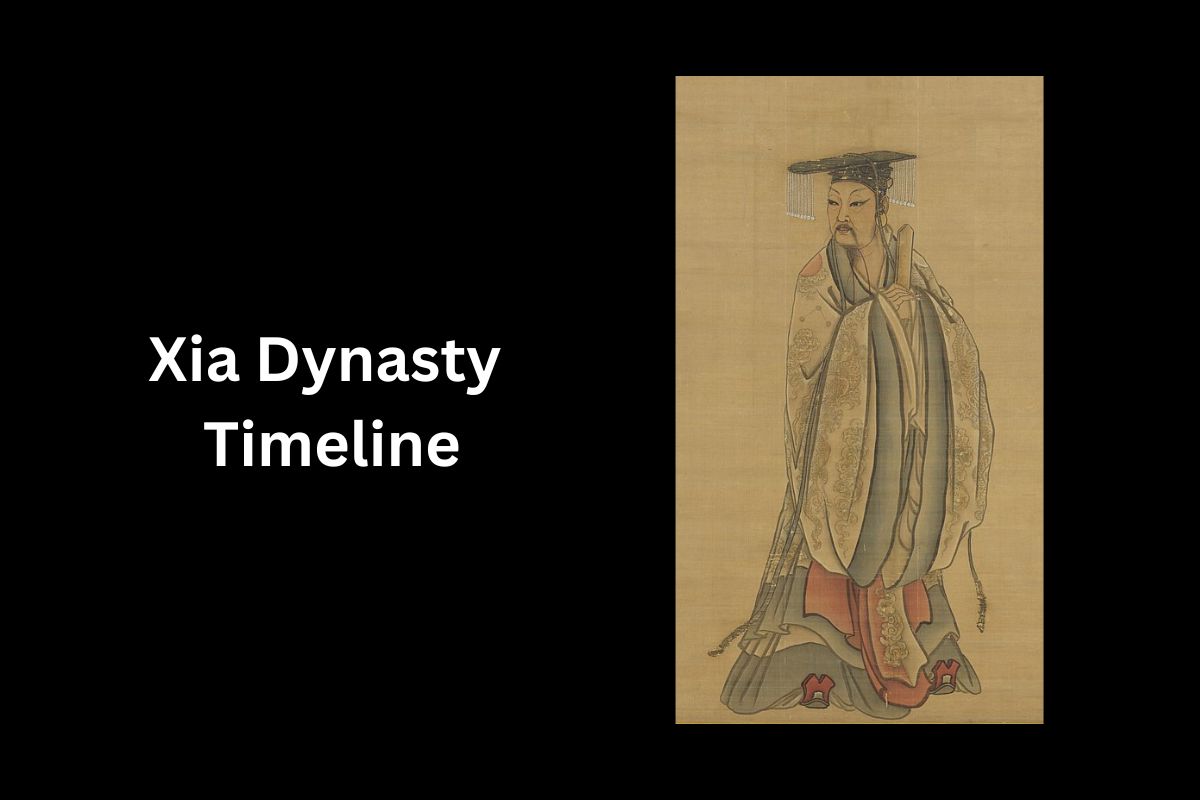The Xia Dynasty is traditionally considered the first dynasty in China, lasting from around 2100 BCE to 1600 BCE. However, its historicity is not definitively established, making it more a part of China’s “legendary history”.
The Xia Dynasty is said to have been founded by Yu the Great, a legendary figure credited with controlling a great flood that covered much of the land. His son, Qi, succeeded him to the throne, marking the beginning of hereditary succession in China’s dynastic rule.
During this period, it’s believed that Chinese society made significant progress, developing early forms of irrigation and flood control, establishing tribal alliances, and making strides in agriculture and pottery.
Also Read: Chinese Dynasties in Order
However, the Xia Dynasty eventually fell into decline. The last king of the Xia Dynasty, King Jie, was known for his tyranny, leading to a rebellion that ended the Xia Dynasty and paved the way for the Shang Dynasty.
Please note that while this narrative is drawn from ancient Chinese records and stories, the Xia Dynasty’s existence has not been definitively proven through archaeological evidence.
As a result, these details should be understood as part of China’s legendary history rather than verified historical fact.
| Year (Approx) | Event |
|---|---|
| c. 2100 BCE | Establishment of the Xia Dynasty by Yu the Great after controlling the Great Flood. |
| c. 2070 BCE | Yu’s son, Qi, assumes the throne after Yu’s death, initiating hereditary rule. |
| c. 1600 BCE | End of the Xia Dynasty. King Jie, the last ruler, is overthrown by Tang who establishes the Shang Dynasty. |
Timeline of the Xia Dynasty
(c. 2100 BCE) – Establishment of the Xia Dynasty by Yu the Great
Yu the Great was a legendary figure in Chinese history, known for his work in controlling a great flood. The tale says that the flood was so vast it covered the entire world, causing great devastation.
Also Read: Facts About the Xia Dynasty
Yu spent many years devising a system of irrigation canals and dikes to channel the waters back into their courses, which eventually led to the taming of the flood.
Yu’s wisdom and perseverance earned him immense respect among the people and he was made the ruler of China, thus establishing the Xia Dynasty.
(c. 2070 BCE) – Yu’s son, Qi, assumes the throne
After Yu the Great’s death, instead of choosing a successor based on merits, as was common in the pre-dynastic period, his son Qi was chosen to be the next ruler.
Also Read: Shang Dynasty Facts
This marked the start of the hereditary system in Chinese dynastic rule, where the power was passed from father to son. Qi continued his father’s work in flood control and made significant contributions in establishing the newly formed dynasty.
(c. 1600 BCE) – End of the Xia Dynasty
The last ruler of the Xia Dynasty was King Jie, who is often depicted as a tyrant. Stories depict him as being corrupt, indulgent, and unconcerned with the affairs of his state.
The people, disillusioned and suffering under his rule, rallied behind a leader named Tang, who led a successful rebellion against Jie.
After Jie’s defeat, Tang established the Shang Dynasty. This marked the end of the Xia Dynasty and the beginning of the Shang Dynasty, the next phase of Chinese history.
Again, it’s worth noting that these events and figures about the Xia Dynasty come from traditional Chinese historical accounts, and there isn’t definitive archaeological evidence to support these details.
